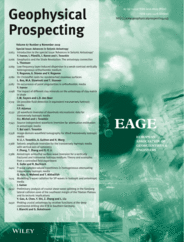-
oa On occurrence of point singularities in orthorhombic media
- Source: Geophysical Prospecting, Volume 67, Issue 9 - Advances in Seismic Anisotropy, Oct 2019, p. 2287 - 2297
-
- 20 Feb 2019
- 12 May 2019
- 30 May 2019
Abstract
Degeneracies of the slowness surfaces of shear (and compressional) waves in low‐symmetry anisotropic media (such as orthorhombic), known as point singularities, pose difficulties during modelling and inversion, but can be potentially used in the latter as model parameter constraints. I analyse the quantity and spatial arrangement of point singularities in orthorhombic media, as well as their relation to the overall strength of velocity anisotropy. A classification scheme based on the number and spatial distribution of singularity directions is proposed. In normal orthorhombic models (where the principal shear moduli are smaller than the principal compressional moduli), point singularities can only be arranged in three distinct patterns, and media with the theoretical minimum (0) and maximum (16) number of singularities are not possible. In orthorhombic models resulting from embedding vertical fractures in transversely isotropic background, only two singularity distributions are possible, in contrast to what was previously thought. Although the total number of singularities is independent of the overall anisotropy strength, for general (non‐normal) orthorhombic models, different spatial distributions of singularities become more probable with increasing magnitude of anisotropy.




